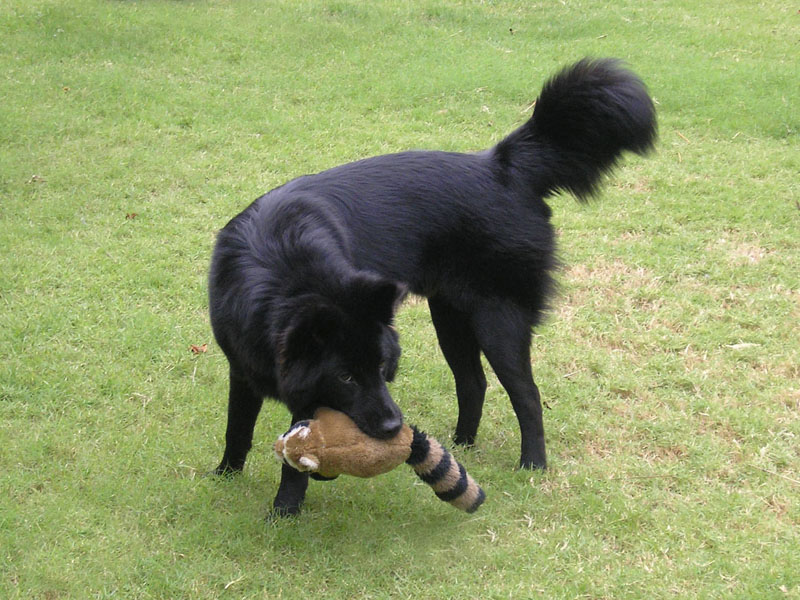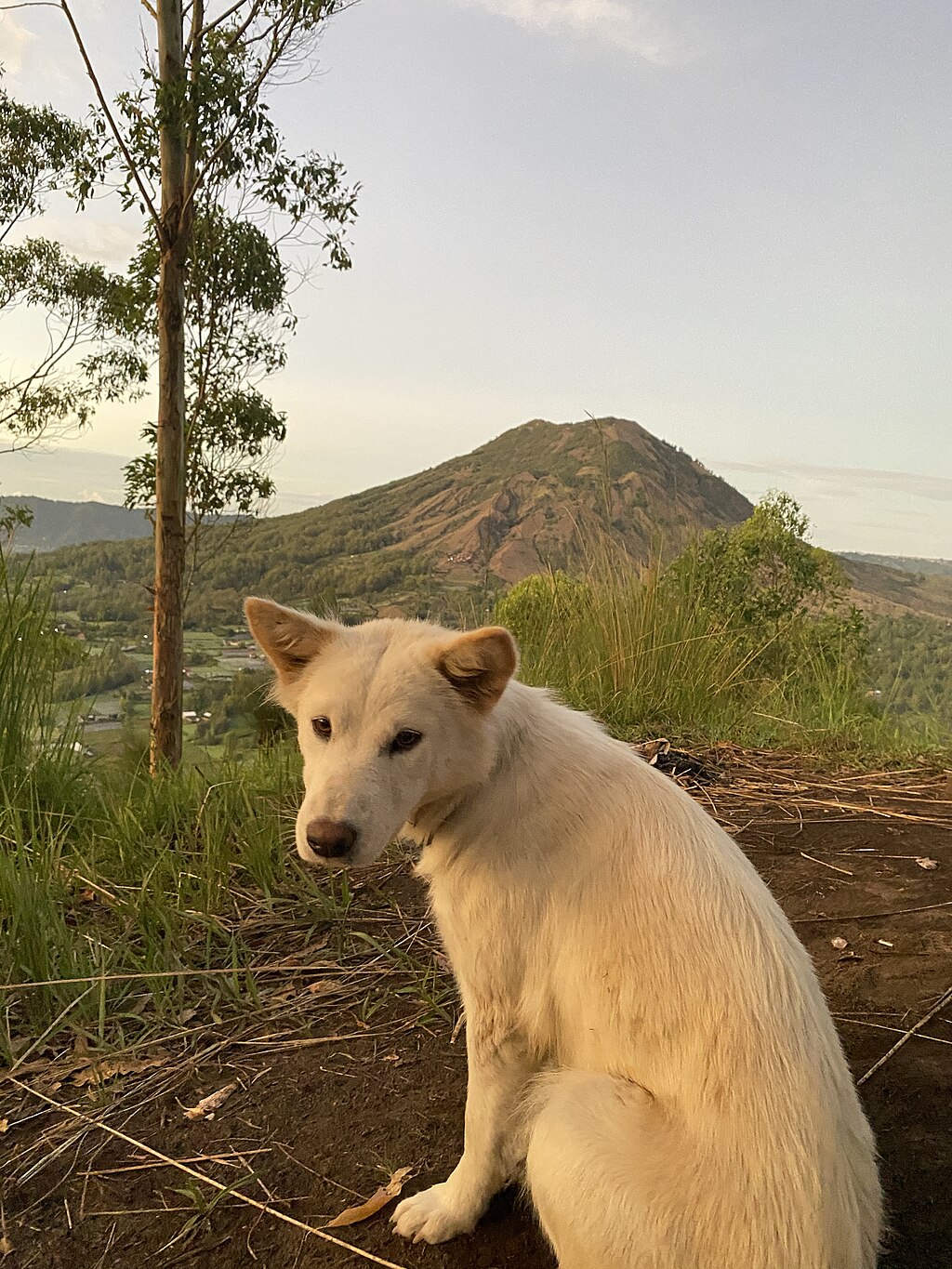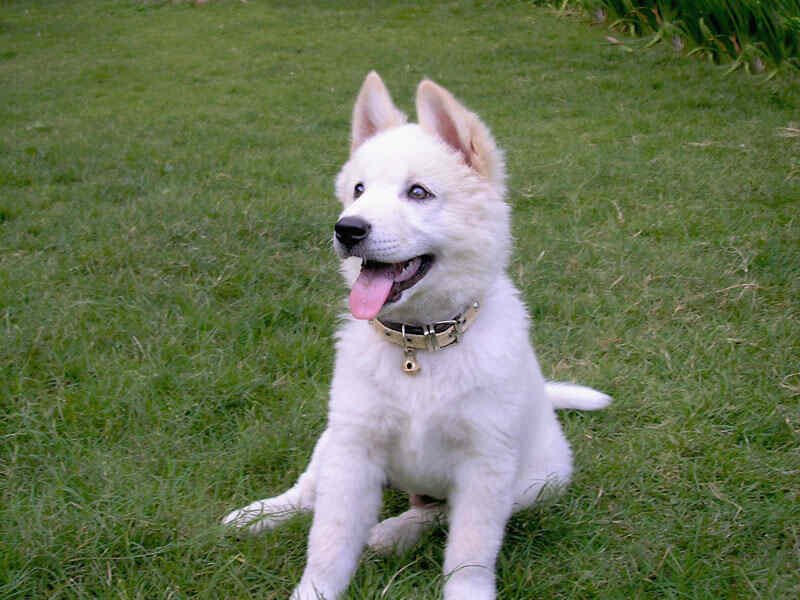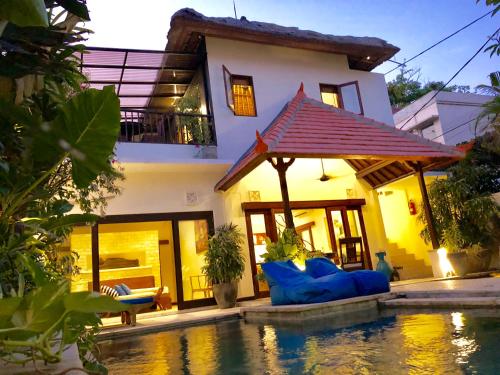The Bali Dog
The Kintamani (Kintamani-Bali dog) originates from the island of Bali (Indonesia). It is very rare outside its homeland. It was developed from the local street dogs of Bali. They are very caring and loyal to their owner and family.They are great family dogs, but they can be very territorial and aggressive towards other dogs.
These dogs have been used as working dogs for centuries, often used as hunting dogs and as guardians of villages. They are highly prized for their loyalty, intelligence, and affectionate nature towards their owners and family members.
Breed standards are documents established by official bodies that list the conditions that a Bali Dog must meet to be fully recognized as belonging to the breed: The FCI (Fédération Cynologique Internationale is the World Canine Organisation) or Pedigree Dogs Worldwide. FCI Standard No. 362.
Characteristic
One of the key characteristics of Bali Dogs is their exceptional loyalty towards their owners and family members.
One of the most notable features of the Bali Dog is their physical appearance. They have a medium-sized, muscular build with a short, dense coat. They are typically white or cream-colored, with patches of brown or black on their fur. Their ears are erect, and their tails are typically curled.
Kintamani mostly have a pure white or cream coat with apricot ears. There are also individuals with a black dress but these are not very popular with breeders1. These dogs measure about 44–57 cm (17.3–22,4 inches) at the withers and weigh 13–18 kg (28.6–39.6 lbs).
It has a lifespan of about fifteen years. He is known to be a sturdy dog. Because of his authoritarian and affectionate temperament, he is considered a good companion and a good watchdog.

Kintamani dog, black colour. Imk0278 sur Wikipédia anglais, Public domain, via Wikimedia Commons
Temperament, Behavior / character
Attentive, intelligent, watchful, gentle, loyal and easy to train.
They are curious and affectionate with his master and his family but can be aggressive and fierce with other people. Probably due to the fact that he has wild dog origins, he likes to climb roofs and dig burrows (a tunnel or hole).
Bali Dogs are also highly intelligent, which makes them easy to train. They are quick learners and respond well to positive reinforcement training methods. This trait also makes them highly adaptable, as they can easily adjust to new environments and situations.

Kintamani is a canine breed originating from the mountains of Kintamani, Bali, Indonesia. V.Thamaraiselvi, CC BY-SA 4.0, via Wikimedia Commons
History
The Kintamani is a dog originating from the province of Kintamani in Bali and more precisely from the village of Sukawana not far from Mount Batur.
The Kintamani breed is an evolution of Balinese wild dogs. A local legend claims that the kintamani dog is a descendant of a chow-chow that was brought to the island in the 13th century by a Chinese merchant named Lee who mixed his chow-chow with Balinese wild dogs.
Evidence that Lee had lived in Kintamani is that there is a Chinese temple of the Confucian faith in the province, within the grounds of the Pura Ulun Danu Batur.
However, it is more likely that the kintamani was crossed with the dogs of the Javanese invaders of the Majapahit kingdom during the 14th century or with those of the Javanese refugees of the 15th century.
Hiking Mount Batur in Bali | Hike to witness the sunrise from the top of the volcano!

Kintamani dog in Mount Batur. Eka343, CC BY-SA 4.0, via Wikimedia Commons
Coat quality: double coat
The undercoat is soft, relatively short. The outer coat is harsh and of medium length on the sides of the body. The neck and the withers are covered with a long and harsh outer coat. The tail is very thick.
(The longer outer coat at the neck is called “BADONG” and forms a ruff. The longer coat that extends from the withers to the back is called “BULU GUMBA”. “BADONG” and “BULU GUMBA” are more visible in males than in females).
Hair / fur colour: white, black, fawn, brindle.
White: White coat with biscuit-coloured rims of the ears. A white coat without biscuit hair around the edges of the ears is admitted although not desired. The truffle is black or brown.
Black: Completely black. A little white is allowed on the chest, toes and/or tip of the tail. The truffle is black.
Fawn: The different shades of fawn, ranging from light fawn to intense red. A black mask is preferable. The truffle is black. A little white is allowed on the chest, toes and/or tip of the tail.
Brindle: Dark or black stripes on a fawn background (various shades ranging from light fawn to intense red). A black mask is preferable. The truffle is black. A little white is allowed on the chest, toes and/or tip of the tail.
How to Help Bali Dogs (Without Too Much Effort)?
Wandering the streets of Bali offers a myriad of sensory delights. Stray dogs are an integral part of the traditional Balinese landscape. They are as much a part of the community as the traveling monkeys and incense offerings in every store.
Street dogs in Bali, at a glance
Many animals have long struggled to survive in the streets, beaches, and villages of Bali facing hunger, illness, mistreatment, and uncontrolled breeding.
Street dogs in Bali are not really considered pets, and the relationship the Balinese have with dogs is very different from those in the cultural context of Western life. The people of Bali do not class dogs as pets. Due to increasing poverty, many dog owners who cannot afford spays and vaccinations end up letting their dogs run around the streets.
You can adopt, donate, adopt and foster
Show your love by adopt, donate, adopt and foster them.
Volunteer activities
It could be summed up as giving love:
- Walking old or recovering dogs.
- Spend time in the boxes with the dogs (adolescents and adults), who need companionship, caresses and socialization. This is an opportunity to take a look at the weakest and most dominant.
- Spend time in the dog box: socialization, games and petting.
- Socialize the puppies: if some are in cages because they are sick, they need to go out daily, play and receive affection. Some spend their days crying, sleep a few hours, and cry again. As much as possible, it is a question of taking them in the arms in order to make them listen to the beats of our heart: this reassures them. Anecdote: if you welcome puppies at home, do not hesitate to wrap an alarm clock in a fabric and place it in the basket.
- Help the team distribute food.
- Wash puppies and sometimes adult dogs.
- Pipette feeding kittens and puppies in difficulty.
- Participate in the laundry (washing machine / dryer).
- Occasionally clean cages, receive visitors, help veterinarians…
Volunteering in Bali: Opportunities to Give Back and Make a Difference
Dogs associations in Bali
Dogs associations in Bali play a pivotal role in improving the welfare and well-being of canines on the island, working tirelessly to address issues such as stray dog population control, vaccination and sterilization programs, adoption and rescue efforts, and community education to promote responsible pet ownership and compassion towards animals. Here are some examples:
BARC (Bali Dog Adoption Rehabilitation Centre)
BARC is a no-kill shelter providing vaccination, sterilization and other necessary medical assistance to all rescued animals. We operate a street sterilization program to help stop the relentless flow of unwanted puppies. Additionally, we conduct education programs in the Balinese community.
BARC runs a basic clinic in central Ubud where the non – emergency cases can be treated and receive care, we also have an adoption centre and retail outlet, the retail outlet hosts our charity store, our pet store and our BARC merchandise store, 100% of profits from these three stores go directly to the care of the animals.
BARC website: https://barc4balidogs.org
BDA (Bali Dog Association)
Tucked away on Tabanan’s famous Rice Fields,
Bali Dog Association is creating a hidden paradise for Dog lovers waiting to be discovered.
With views of lush rice fields all around, a team of with the biggest heart to help in any way they can, and a wonderful retreat with all the doggies sorrounded that incorporate all the beauty of this island.
Bali Dog Association website: https://www.balidogassociation.com
BAWA (Bali Animal Welfare Association)
BAWA is a registered non-profit and 501(c)3 founded in 2007 by Janice Girardi, an American resident who has made Bali her home for over 30 years.
They are absolutely everything in our power to change the lives of animals in Bali, by changing the world that they live in. Until suffering is no longer ignored; until all lives are valued equally.
BAWA website: https://bawabali.com
Photo credit (main picture): Imk0278 (Public Domain) via Wikimedia Commons
Have you booked your villa in Seminyak center?
Located in Seminyak Center – Bali, Villa Carissa offers a private swimming pool and enclosed garden to guarantee your privacy. You can book your private pool villa here with us.
Whether you’re traveling with family, friends, or on a romantic getaway, villa Carissa in Seminyak center offers the perfect base for exploring Bali’s many attractions and enjoying a relaxing vacation.



